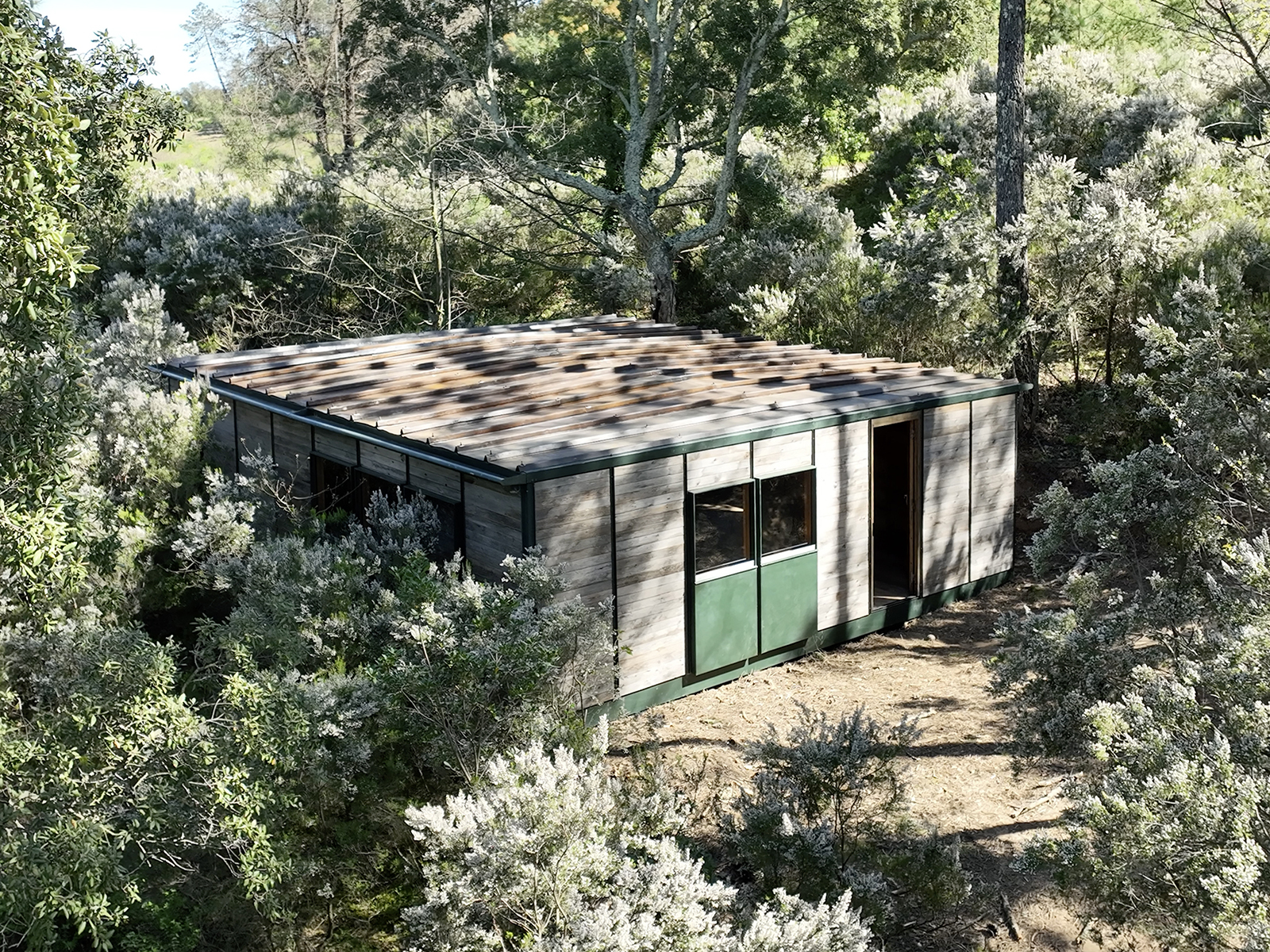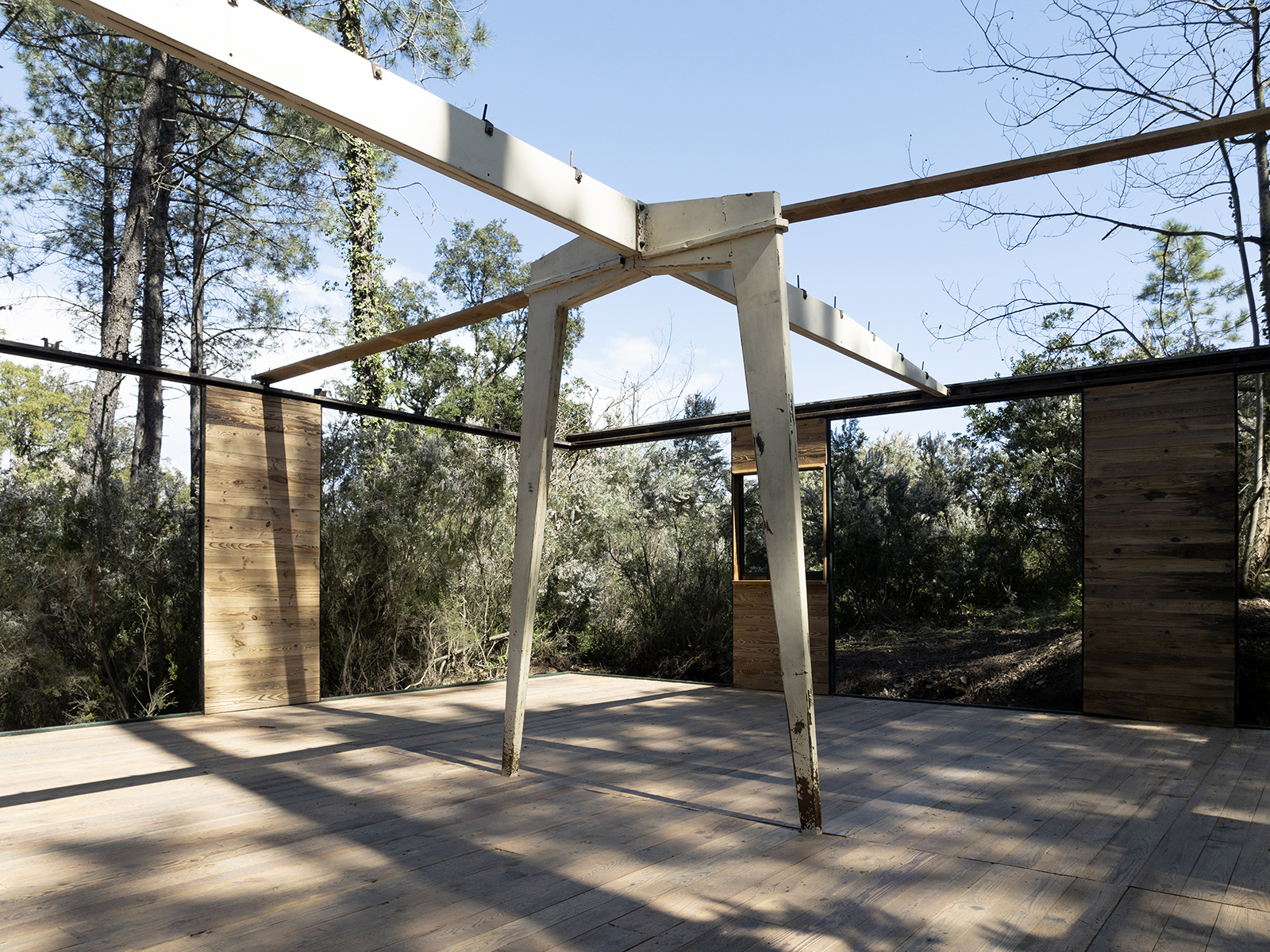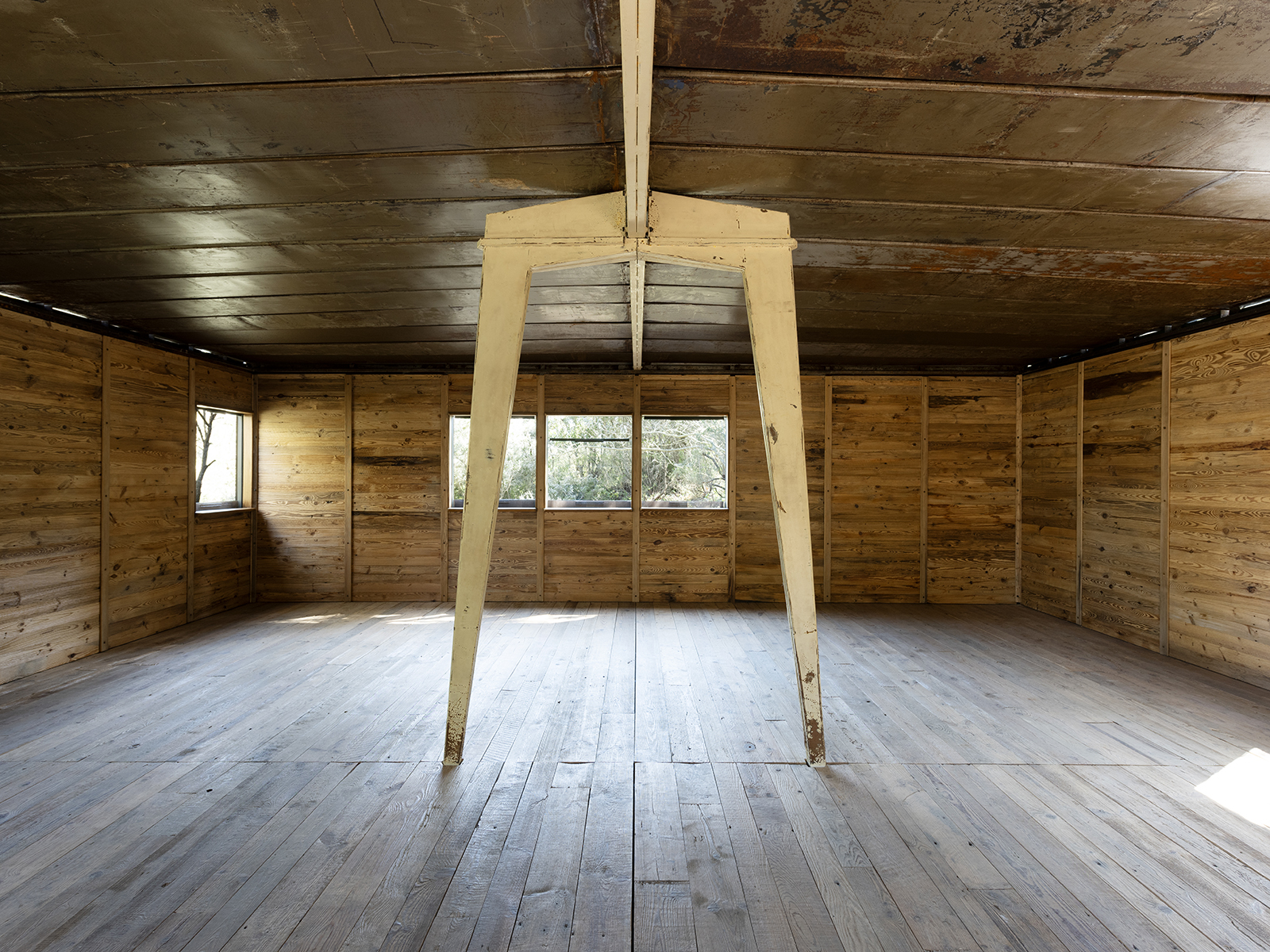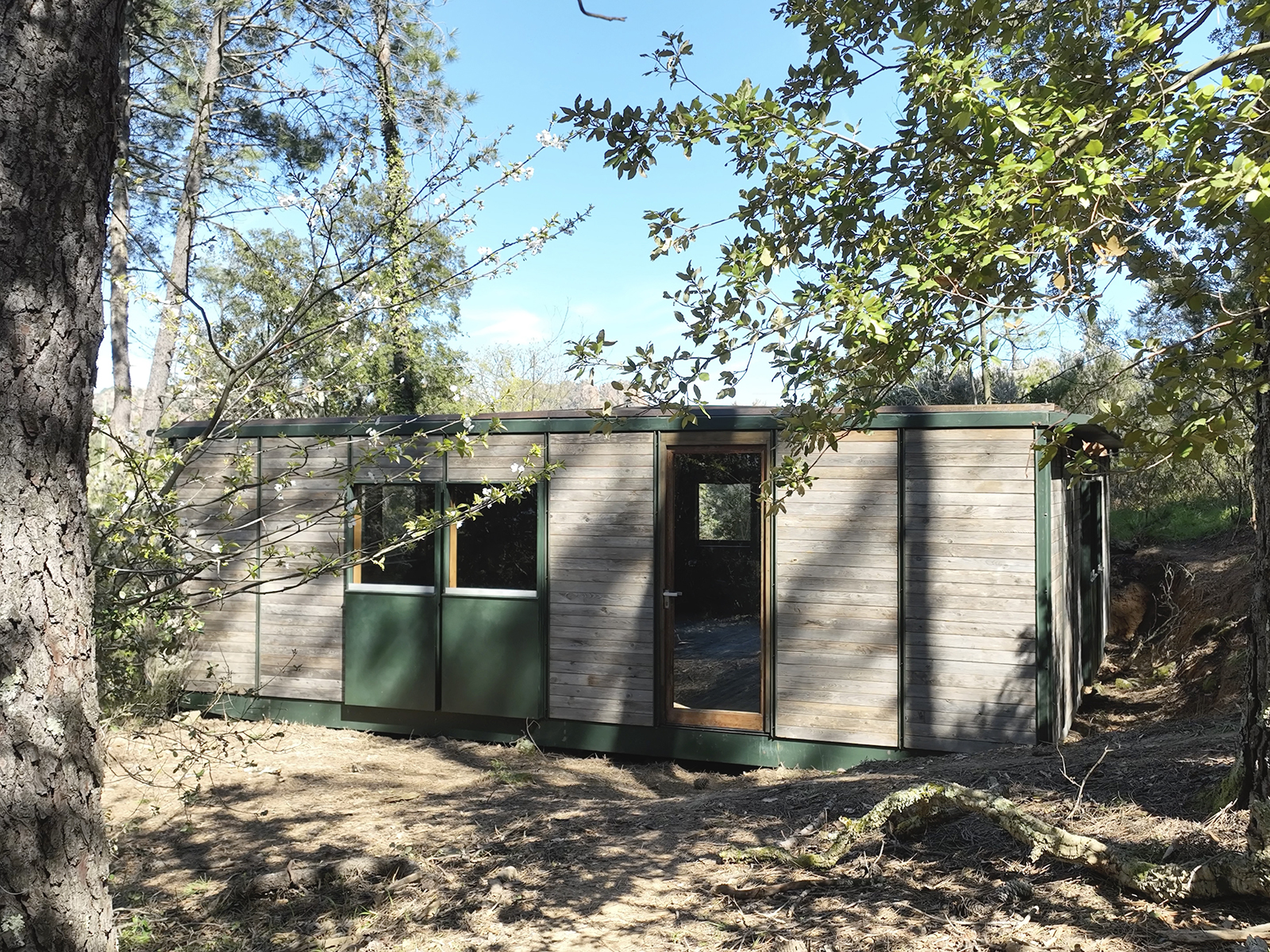JEAN PROUVÉ
Carnac Demountable house, 1946Metal, wood and glass
8 x 8 m26'3 x 26'3 ft
In the summer of 1946, for the first time since the end of the World War II, the Prouvé family made plans to holiday in Carnac, Brittany, continuing a family tradition. Jean and Madeleine Prouvé looked for a site to install an 8x8 demountable house for their large family. The pavilion, as well as the furniture, was shipped by train in separate parts by Madeleine Prouvé. The house was initially intended to be installed near the Grand Casino in Carnac, but in the end was erected elsewhere, serving as both family home and a demonstration model promoting prefabricated housing.
Based on Prouvé’s axial portal frame construction principle, patented in 1939, it is composed of lightweight prefabricated components in metal and wood. Steel, which had been limited to strict quotas during the War, is reserved for the folded metal frame, with standardized wood panels inserted into it. Unlike the models produced during the War, some of the facade panels and windows are fitted with sheet-steel covers, improving their durability.
The summer 1946 experiment was the opportunity to test the use of the demountable house for vacations. Testament to an extraordinary human and industrial venture, this house represents a personal history while being of historic significance.



